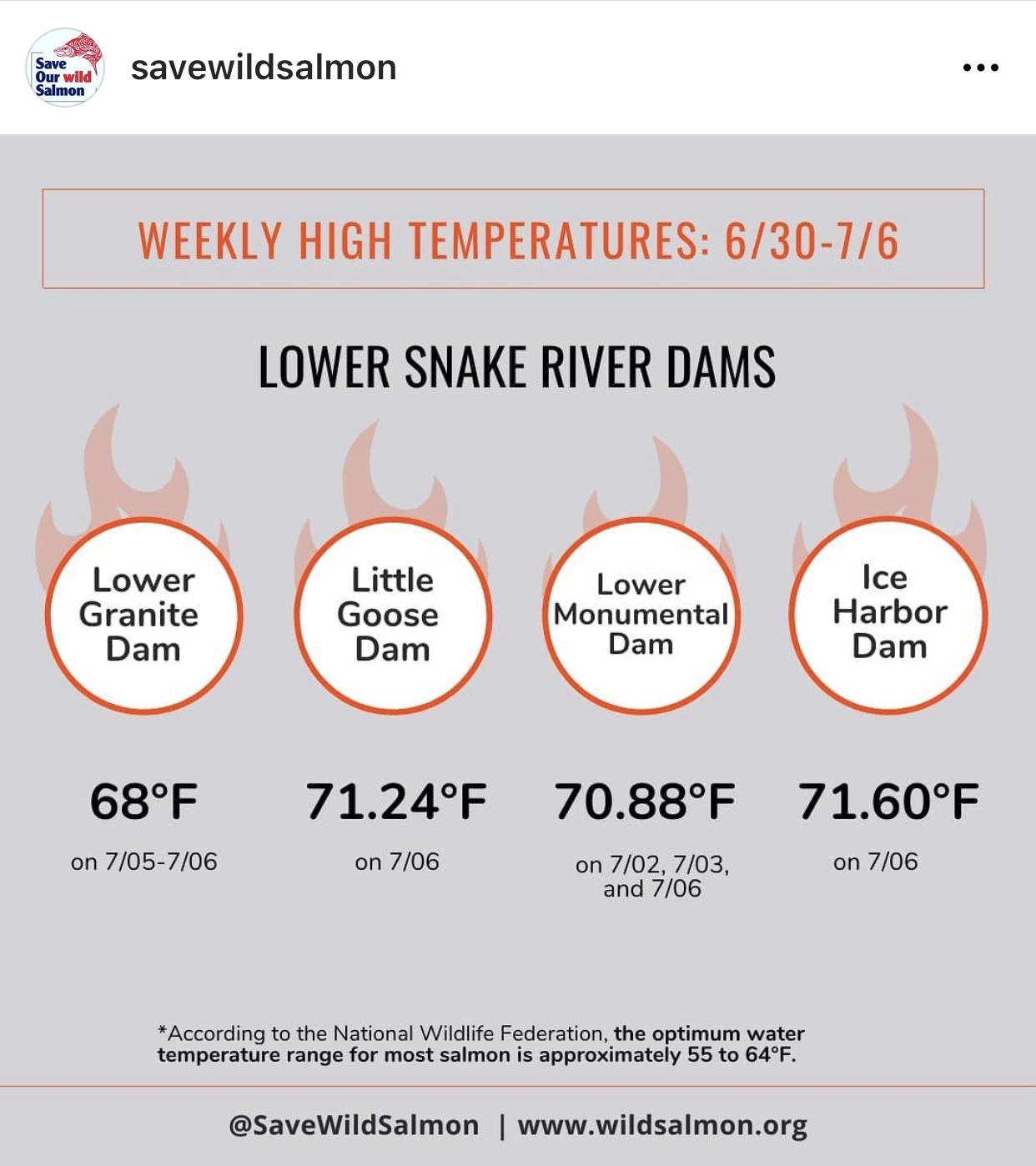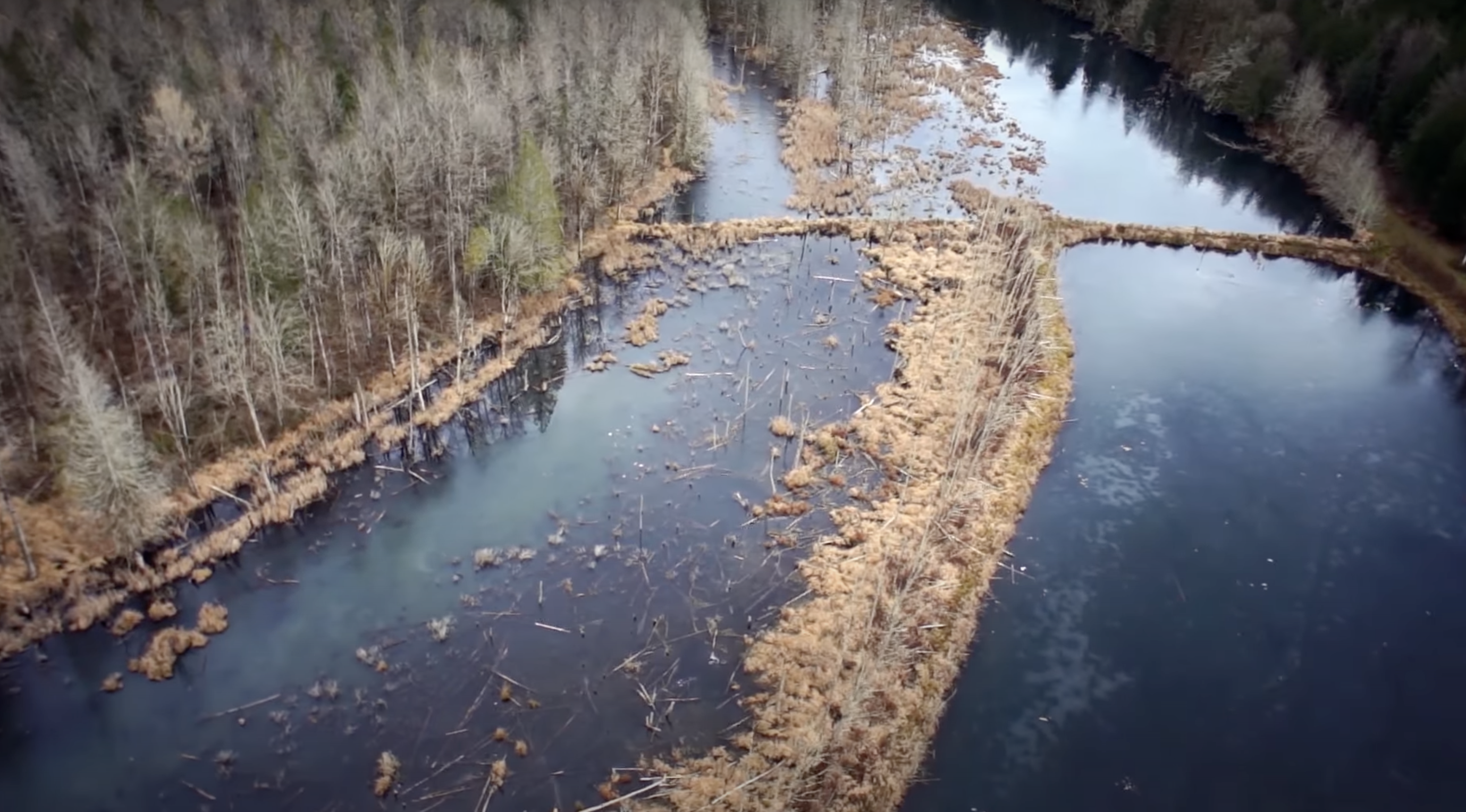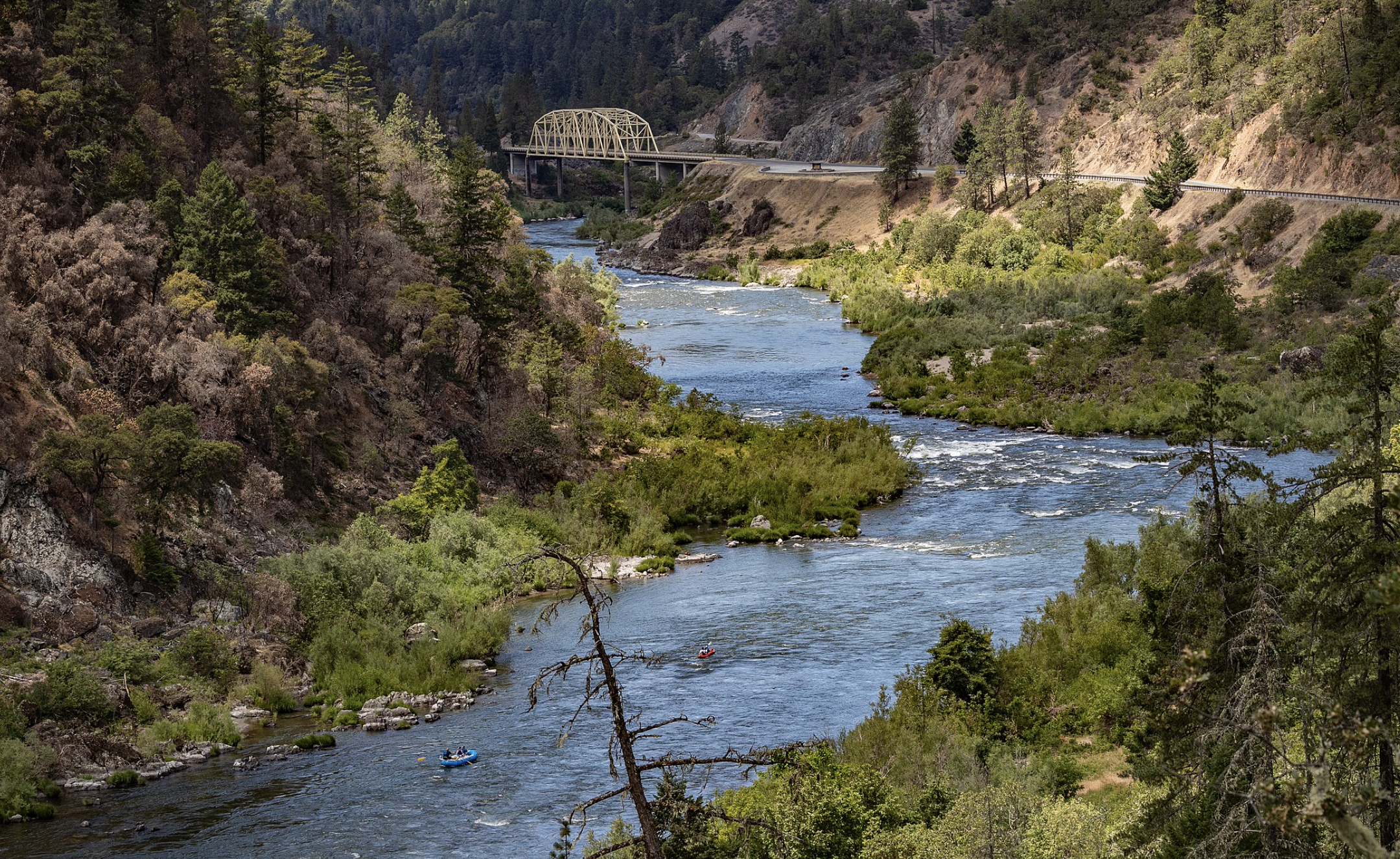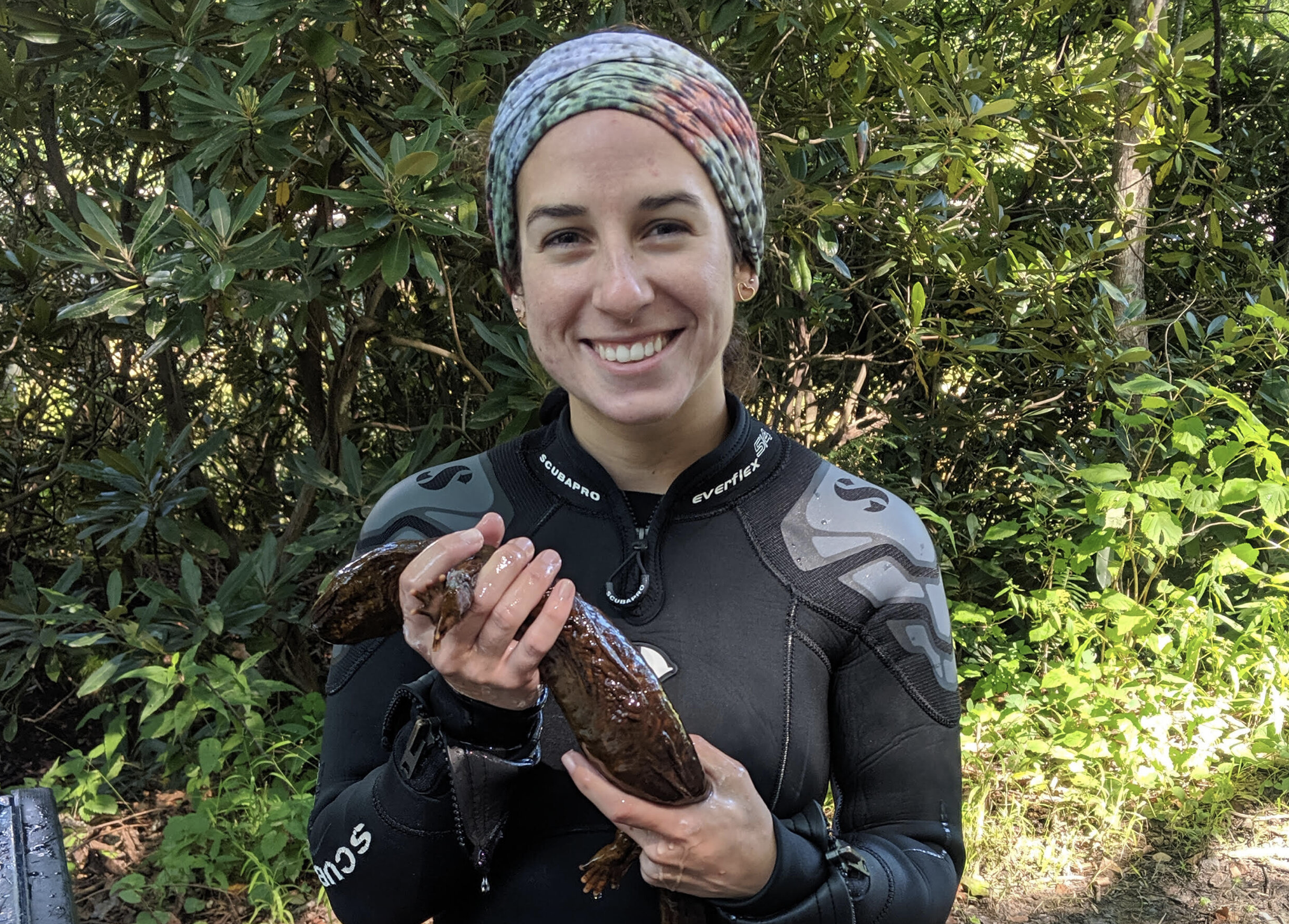|
|
The Adipose Official Newsletter of the Wild Steelhead Coalition
July 2021 | Volume 20, Issue 6 Having trouble viewing this email? View it in your web browser |
|
|
|
 |
Returning Steelhead and Salmon Already Facing Hot Water on the Snake and Columbia Rivers Recent extreme heat across the Northwest has conservationists and steelhead and salmon anglers extremely worried. Weeks ahead of the usual peak of summer heat, low water and record-breaking temperatures have combined to warm the Snake and Columbia Rivers to levels that can be lethal for salmon and steelhead. In 2015, high water temperatures killed nearly all the sockeye salmon returning to both watersheds and also impacted chinook and steelhead. Rocky Barker, reporting in the Idaho Statesman, warns that this year the temperatures look even worse. Fishery managers are scrambling. Cold water is being released from Dworshak Dam, on the North Fork of the Clearwater, ahead of schedule. Water is being run through the powerhouses of the Snake dams, hoping to draw slightly cooler water from deeper within reservoirs, instead of spilling hot water over the top. Managers are preparing to capture and truck fish up and down river to help them find cooler temps. As the climate continues to warm, the impoundments behind the dams, especially those on the Lower Snake River, bake in the sun and heat to dangerous levels. Anglers need to demand cold water refuges be set aside wherever possible in the river systems, but above all, we need our elected officials to breach the four dams on the Lower Snake and restore a free-flowing river. Studies released by the EPA show that removing the impoundments could be a crucial step towards stabilizing river temperatures at levels safe for migrating fish and allow steelhead and salmon better access to Idaho's cold, high-elevation spawning and rearing habitat. |
|
|
|
|
|
|
|
Washington Coastal and Olympic Peninsula Steelhead: WSC Blog Post and Upcoming Online Town Halls Ahead of the late June Washington Fish and Wildlife Commission meeting, the WSC published a blog post calling for increased transparency and equal engagement with all stakeholders of coastal wild steelhead fisheries after a closed-door, undocumented meeting between commissioners, fishery managers, the Forks City Attorney, and a small group of commercial fishing guides came to light. We wanted to let the Commission, and Washington Department of Fish and Wildlife, know that many anglers are deeply concerned about the state of struggling wild steelhead populations on the coast and OP. We want comprehensive conservation efforts undertaken to protect and restore these iconic watersheds and their incredible wild winter steelhead. (Read our "Vision For Abundance" blog post for the WSC's suggestions to help achieve this goal.) Over the coming months, anglers will have multiple opportunities to hear from WDFW fishery managers on the state of coastal wild steelhead populations and offer feedback on the rule setting process for the upcoming winter season. The first of these online "Town Halls" is scheduled for the evening of Wednesday, July 28. Conservation-minded anglers should put the date on their calendar and plan on attending to insist managers set responsible, forward-looking policy for the coast's wild steelhead. |
|
|
|
|
|
 |
Skagit River: Barnaby Slough Restoration Project Begins After a decade of planning and study, some great news from the Skagit River as the physical work to restore Barnaby Slough, and reconnect this important rearing habitat to the watershed, gets underway this summer. This project will remove the remnants of a defunct steelhead hatchery and reconnect miles of critical floodplain and fish rearing habitat near the confluence of the Skagit and Sauk Rivers. Approximately 1200 acres of Barnaby Slough are owned by the WDFW, Nature Conservancy, and Seattle City Light and the project is being managed by the Skagit River System Cooperative, a watershed restoration organization providing natural resource management services for the Sauk-Suiattle Indian Tribe and the Swinomish Indian Tribal Community. In 2011, the WSC was able to help fund some early mapping of the Barnaby Slough site and we're thrilled to see a decade of planning come together to support habitat restoration in this iconic watershed. Watch a video about the project on our YouTube page. |
|
|
|
|
|
 |
ODFW Releases Draft of Rogue-South Coast Multi-Species Conservation and Management Plan Immediately before the July 4th holiday weekend, the Oregon Department of Fish and Wildlife (ODFW) released a draft of their new multi-species fishery management plan for the Rogue River and other South Coast watersheds. As some readers may know, this is one of the only regions in the country that still allows wild steelhead to be harvested by recreational anglers. Unfortunately, many conservation groups (the Wild Steelhead Coalition included) are deeply concerned about the lack of oversight and monitoring of these fisheries. Simply put: A widespread lack of data and monitoring means we do not have confidence that wild steelhead populations can sustain harvest. We'd love to be wrong, but right now no one knows how many fish are returning or how many are being killed for sure. WSC members should stay tuned for upcoming opportunities to offer feedback on the draft of this new plan. We will be sending out more information soon to our email list and on our social media channels. |
|
|
|
|
|
 |
|
Wild Steelhead Science: 2021 Graduate Scholarship
As a part of our commitment to science-based advocacy and fishery management, the Wild Steelhead Coalition funds new research into wild steelhead whenever possible. Over the years, we’ve had the privilege of offering scholarships to several graduate students doing work around wild steelhead life histories, habitat, and recovery. This year we are pleased to be supporting a project by Lauren Diaz, a PhD student in the OSU Department of Fisheries, Wildlife, and Conservation Sciences at Oregon State University. Learn more about her work in the link to our recent blog post. |
|
|
|
|
|
|
|
Wild Steelhead Coalition Founded in 2000 by a group of Washington anglers deeply troubled by the loss of their beloved wild steelhead fisheries, the Wild Steelhead Coalition is dedicated to increasing the return of wild steelhead to the waters of the West Coast. Today our members live throughout Steelhead Country and work tirelessly to build partnerships among stakeholders, educate the public, and advocate for the science-based management required to restore wild steelhead populations. |
|
|
|
|
|
Connect with WSC on Social Media
|
|
|
|
|
|
|